History
Established in 1912, Northeast Wisconsin Technical College has prepared tens of thousands of individuals from across our region – and from all walks of life – for in-demand careers and purpose-filled lives. Today, NWTC is the place to go for hands-on skills using real world equipment and the latest technology. Throughout the College’s history is this common thread: a commitment to student success.
Our Timeline
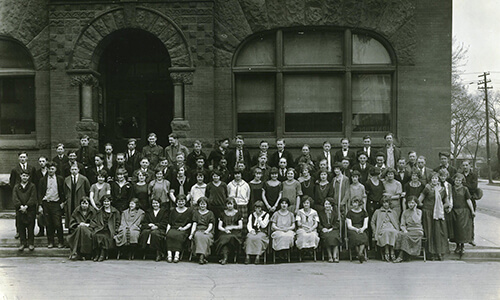
Early 1900s
Wisconsin educators and lawmakers recognized the need for high-quality education for working young adults. Starting in 1912, City Vocational Schools in Green Bay and Marinette offered courses in machine shop, woodworking, printing, bookkeeping, shorthand, typing, mechanical drawing, sewing, and commercial work along with standard reading, writing, and math for younger students. They provided instruction for apprentices and, in time, offered courses to adults of all ages, whether they were working or not.
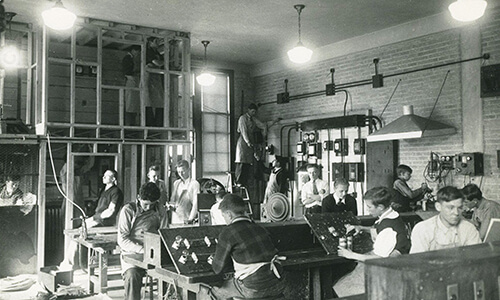
1930s and 1940s
City Vocational Schools in Green Bay and Marinette responded to their communities by offering job training for the unemployed during the Depression. Both schools operated 24 hours a day/seven days a week to provide training for the war effort during World War II. The Sturgeon Bay Vocation School started in 1941 to help meet those needs. As more young students turned to the high schools for their standard education, the Vocational Schools expanded their territories and started to offer two-year technical programs and vocational diplomas.
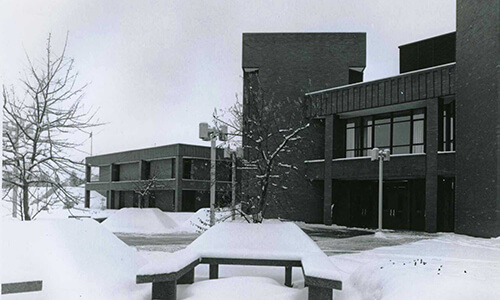
1960s and 1970s
To serve all citizens, the state organized the Vocational Schools into districts covering all counties. In 1967, Brown, Door, Kewaunee, and Oconto counties formed the Wisconsin Vocational, Technical and Adult Education District 13. The city and county of Marinette joined District 13 in 1968, while Florence county and part of Shawano county joined in 1970. The united schools received a new name – the Northeast Wisconsin Technical Institute (NWTI). The Sturgeon Bay and Marinette campuses built new facilities in 1971, and a large Green Bay campus complex was ready for classes in 1972. The Institute applied for and received national accreditation.
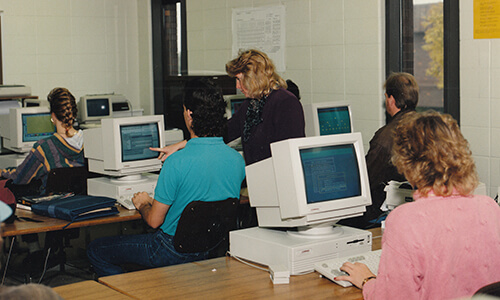
1980s and 1990s
In 1987, the increasing complexity of workforce skills and increasing rigor of programs prompted a new name – Northeast Wisconsin Technical College. Other changes included an increased focus on serving the educational needs of businesses and industries in our communities. Starting in the early 1990s, the College pioneered the use of online technology to offer flexible options for education. By the end of the 1990s, facilities were cramped, yet many residents still could not pursue their education because of distance, the need to work during traditional class times, or changing schedule needs.
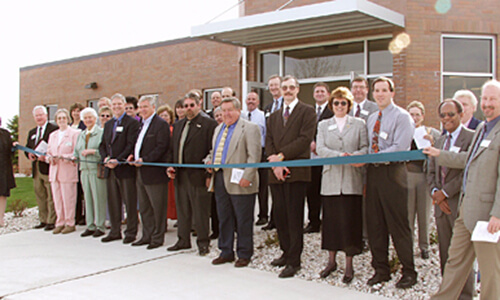
Early 2000s
The new millennium brought a referendum for growth and a new vision to make education available where, when, and how learners need it. In 2001, District voters approved the College’s $46.6 million expansion plans. During the next three years, NWTC expanded the Sturgeon Bay and Marinette campuses and enhanced or constructed the following centers for learning on the Green Bay campus: Health Sciences Center, Manufacturing Technology Center, Business and Information Technology Center, Student Center, and the Building and Construction Trades Center. The 2001 referendum also consolidated, strengthened, and provided professional staff at six new regional learning centers, which brought valuable degree and training access to district residents. Due to the increased capacity created by the 2001 referendum, enrollments rose 70% in the years 2000 to 2010.
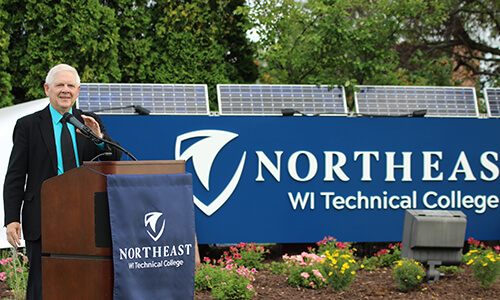
2010s
In spring 2010, NWTC became the first college in Wisconsin to join Achieving the Dream, a nonprofit dedicated to helping community college students succeed, with a focus on creating a “culture of evidence” on college campuses. As a member of Achieving the Dream, NWTC identifies strategies to improve student success, close achievement gaps, and increase retention, persistence, and completion rates. In 2011, the College was ranked in the top 10 percent of U.S. community colleges in demonstrating high levels of student success by the Aspen Institute. The College celebrated its centennial in 2012 with a community event on the Green Bay campus. NWTC was named a Leader College by Achieving the Dream in 2014 for improving student success and closing achievement gaps. On April 7, 2015, NWTC district voters passed a $66.5 million referendum, approving the College’s plans to create dedicated training space for high-growth industries including energy, transportation, advanced manufacturing, information technology and entrepreneurship in Green Bay, Marinette, and Sturgeon Bay. By 2018, construction was complete on 160,000 feet of new space and 240,000 feet of renovated space. New facilities included the Great Lakes Energy Education Center, Transportation Center, College of Business, and Universal Driving Facility in Green Bay; and the Learning and Innovation Center in Sister Bay in partnership with Nicolet National Bank. The project also included an expanded/improved Marinette Campus, upgraded Sturgeon Bay campus, and upgraded spaces for the Trades and Engineering Technologies department on the Green Bay campus. NWTC was recertified as a Leader College in 2019, for achieving and sustaining significant improvements in student outcomes. In the fall of 2019, NWTC updated its logo and other branding to reflect the College’s ability to inspire and transform lives not only with hands-on education, but with its lesser-known offerings like four-year transfer opportunities and degrees in science, technology, engineering and mathematics. “The future expectations of our students are changing the face of higher education,” NWTC President Dr. Jeff Rafn said. “Our role at NWTC is to help them shape their story and prepare with purpose. We have undergone a significant shift in our facilities and our programs to meet the needs of our students and our community through technology, flexibility, and workforce demand. Amid these changes, we wanted to change the College’s logo and branding in a way that reflected the ever evolving NWTC experience and journey of our students.” The College’s new tagline – Soar Higher – came from an NWTC student during a Student Senate meeting. The student conveyed how NWTC helps people reach for their dreams, higher than they thought they could.